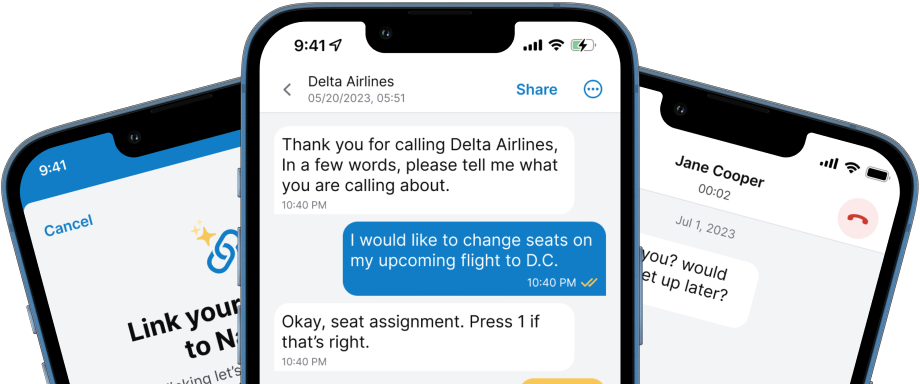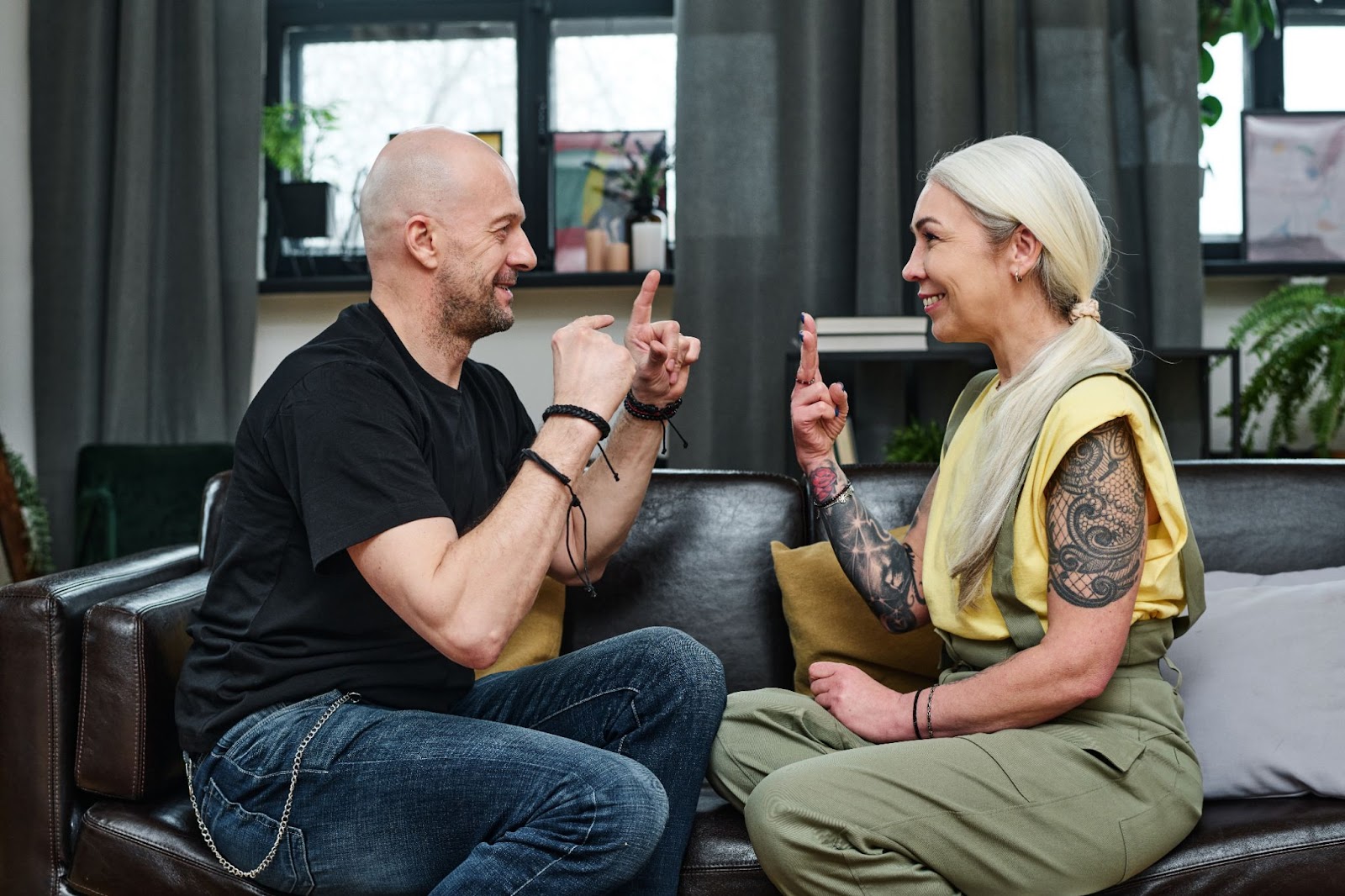Discovering Your Deaf Identity: A Personal Journey
Explore the journey of embracing your deaf identity, from challenges to triumphs. Learn tips and connect with the community!

It is a well-known fact that 90% – 95% of d/Deaf people are born to hearing parents. This means that the other 5% – 10% are a minority of a minority group – generational Deaf members who grow up immersed in Deaf culture with access to sign language from birth.
Since they have Deaf parents, family members, and siblings, they tend to struggle less with “Dinner Table Syndrome”. They are likely to be more confident in their identity being surrounded by role models. They learn indirectly and directly how to navigate societal barriers and transition between the hearing culture and the Deaf one.
If you are in the 90% you may struggle with structuring your life around your deafness. Many people are unaware of how being d/Deaf affects every aspect of our day-to-day lives. Self-advocacy is not an instinctual skill set for many. It is something most must learn with time – and often with difficulty. If you are late-deafened or grew up without access to learning sign language, it adds more layers to navigate.
You Are Unique
As a d/Deaf or hard of hearing person, know your journey may not look like another’s. We all come from different backgrounds, different families, different access to language and privileges. A big component of navigating this process is not going it alone.
The hearing and medical perspective often see deafness as a loss – something to mourn. To resist this begin with knowing that you are not alone. Seeing other Deaf people bolsters that feeling of shared experiences and confidence. When you see other people who lead successful and fulfilling lives, that gives hope. Einstein once stated:
Everybody is a genius. But if you judge a fish by its ability to climb a tree, it will live its whole life believing that it is stupid.

Likewise, measuring yourself by hearing standards and their culture is not the metric to hold onto or you will struggle with feeling confident in your abilities. And that to me, is the word that sums up the essence of Deaf identity:
Confidence.
Understand that this does not happen overnight. It takes time to develop and much as we wish to, we cannot rush the process. There are ways to build that confidence, however.
Social Identity

It is hard to discover that inborn confidence without role models or pioneers who have already gone before you and paved the way. I have found a social network in two places: online social media platforms and in-person groups and events.
If you use the search bar of Facebook, Instagram, etc, and type “Deaf” + your city location, you can often find local groups that way to join in person. There are Deaf coffee chats, clubs, picnics, Hands and Voices groups–if you dig and look.
There are also online-only groups you can join that have a much larger network to explore. Some are big or small, some are for the oral deaf, and some are ASL only; with research, you can find one that fits your needs. No two d/Deaf people are alike, and there is support for you out there.
Support groups, whether online or in person, are the places to get answers and advice or even just to be able to vent and be understood. That experience and insight you can gain is invaluable.
Language Identity
A large part of Deaf culture centers around shared language, such as ASL or your country’s sign language. If you are learning sign language late in life, you are not alone, and that is a very common experience among d/Deaf people. It is important to learn from other native signers, however, for accuracy and quicker learning experience.
Many use Lifeprint to learn ASL from Dr. Bill. ASL THAT on YouTube is also a great resource. Some community colleges or centers have ASL classes taught by a Deaf teacher.
Learning sign language will give you many advantages:
- A larger social network – and with it less isolation.
- Ability to have interpreting accommodations.
- Confidence from learning a new language.
- Option to use video relay service.
- Newfound knowledge of Deaf culture and history.
Self Advocacy
Another component of being d/Deaf is the ability to identify your needs and advocate for them. This is one of the hardest milestones to reach. For some, it may be effortless, but many have gone through the experience of feeling like a burden and hesitant to ask for support.
If you are part of the 90% born into hearing culture, we learn quickly it is far easier to mask and pretend to blend in. A consequence of this is your mental health; d/Deaf people experience high rates of mental health issues such as depression. You matter and are worth having your needs met.
Some ways you can self-advocate can be in small steps. Ask for the front seat, request to see speaker slides before or after a speech, turn on captions on your TV, or try a new app like Nagish for phone calls. Build up to larger advocacy steps: ask for captions on training videos at work, request interpreters at the Doctor’s office, and have a family member write down what they said. The more you advocate for yourself in small and large ways, the more your self-confidence will increase.
Navigating Hearing Society
I'd love to offer some practical insights that many d/Deaf individuals often learn through trial and error. From personal experience, I've discovered several helpful strategies that streamline my daily routine and enhance convenience.
Restaurants

When dining in person, point to what you want on the menu. Everyone has different results from speech therapy, but I’ve had misunderstandings one too many times from voicing. Pointing and showing the server directly has greatly improved the accuracy of my order.
When doing takeouts, it is worth downloading apps for each place you order from. This way, you can order via the app and do curbside pickup. If you have to pick it up inside the restaurant, you can show the order number confirmation from the app. Some are very Deaf friendly and intuitive to use. Some restaurants, such as McDonald’s and Wendy’s, now have kiosks inside to order independently. It is worth asking your local Deaf group which locations have them.
When ordering from the counter, the best method I found is using a note-taking app like Nagish Live Transcribe on my phone to type it out and show it to the cashier. It will also caption their voice responses as well like the image below.

Appointments
You can always make an appointment via phone call using Nagish app to place and receive calls. We no longer need to rely on our relatives or friends to make phone calls for us, which is a great milestone. Phone calls used to be an uncomfortable experience for most deaf and HoH individuals, but today with solutions like Nagish – they are now private, fast, and accurate.
Also, request email correspondence. Some will refuse, citing privacy restrictions, but there are ways around it, such as using your medical patient portal online. Email also gives you a paper trail, especially if you request accommodation that is not fulfilled.
Research Reviews
One of the benefits of being plugged into the Deaf community is learning which places to avoid and which work to accommodate d/Deaf clients. Some places are also Deaf owned or run by CODAs who know sign language.
There are also websites where you can look up d/Deaf reviews of places like DeafFriendly. It is worth looking up your area and learning the hidden gems. It will greatly improve your life experience not to have to fight for access. Take the time also to leave your reviews to benefit other d/Deaf as well.
You can also find Deaf friendly audiologists and SLPs who know or are fluent in sign language. There is a website listing them at Deaf Friendly Audiology for you to pursue.
Embrace Technology
Not a day goes by without the use of my smartphone. From restaurant apps to timers (that I’ve set on vibrate), to captioned phone calls, captioned FaceTimes, notepad use, reminders, emails, and on it goes — it has greatly improved my life as a Deaf person. Learn the accessibility features on your phone for Android or iPhone. You may see some that surprise you, such as sound alerts for fire alarms or a baby crying.
Amazon also has vibrating alarm clocks for your morning routine. Some are very compact and travel-friendly. Some people use Apple watches for alarms and have them set on vibrate. Your local Vocational Rehabilitation center may be a great source for alert devices, and often at no cost to you.
Remember to keep your devices ready, and download the latest updates. Be sure to charge your phone and all devices like hearing aids – there is nothing worse than trying to use an app, and it dies when you most need it. My life hack is to have a charger in every room and also in the car.
One app in particular I use frequently is voice-to-text. Nagish has a Live-transcribe feature that does this if you want to caption someone else's speech on your phone. In a pinch, it has come in handy. Some Deaf use live-transcribe at the same time as using an interpreter to check quality.
Conclusion
Discovering your identity as a d/Deaf person is a personal and life-changing experience. It involves self-growth, language, social, and cultural exploration while navigating barriers daily. No two experiences will be alike, but it is unique to you and worth embracing.
Moment by moment, you’ll learn and discover what you are and what works for you. Know you are not alone, and it is worth it!





%20(1).webp)